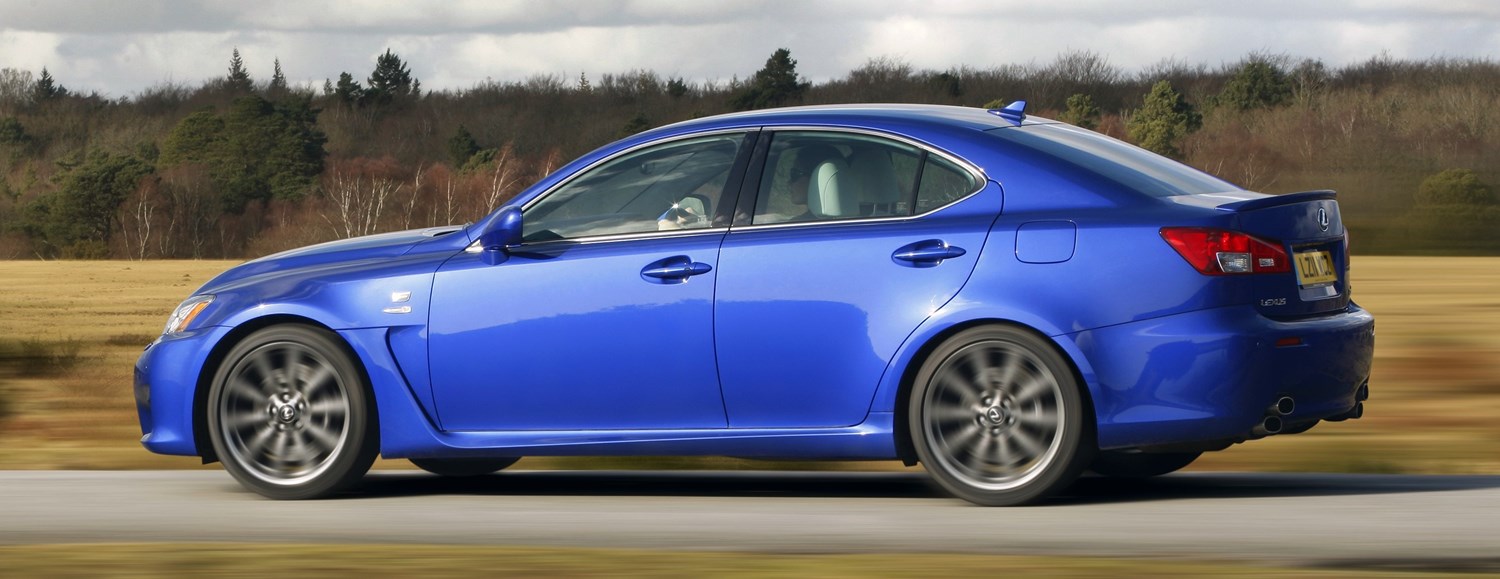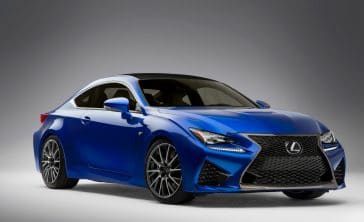Model Review
As the brand’s first foray into the compact market, the Lexus IS was introduced to Europe at the back end of the last millennium and came in both saloon and wagon guises.
In line with Lexus’s move towards a more premium feel, the IS has become a stylish and comfortable rival to the main German contenders that continually rule the compact saloon sector.
2005 saw the IS move towards those rivals in feel and style as the wagon model was dropped and as is the way with Lexus, they added plenty of technology to make it more appealing in that aspect.
The styling for the IS got a drastic remodel in 2013 when the third generation came out, as it was one of the first vehicle’s from Lexus to come with the now-normal ‘spindle grille’ that dominates the front end design. This marque also saw the introduction of the more efficient hybrid powertrains to the IS range.
Latest Model
For the third generation, Lexus completely ditched diesel power units for the IS and they were replaced by a raft of hybrid powertrains, which offer better efficiency and lower emissions.
The styling is also much bolder than before, with the front grille being very distinctive and the sharp daytime running lights also standing out on this compact saloon.
Where the IS excels is comfort and with the hybrid power units, it cruises superbly well over long distances with the interior layout and design helping to offer a nice experience.
As you would expect from the Toyota-owned brand, the reliability of the IS is superb and in the four years since its release very little has gone wrong with it.
Value for money
Due to the premium nature of the Lexus brand, the starting price for the IS is at the higher end of the compact executive saloon market, with SE models starting from £30,105.
For that you get cruise control, driving mode selection, Lexus’s infotainment system on a seven-inch display with dial control, 16-inch alloy wheels, LED headlights, single-zone air conditioning, three-spoke leather steering wheel with paddle shifters, Bluetooth phone connectivity and daytime running lights.
That is a good range of accessories for a base model, but it is nothing more than you would expect from its rivals that mostly start at lower prices.
As the most recent model of the IS only came with two engine choices, where you will find the majority of variation is in the trim levels. The top spec Premier model with the more efficient 300h hybrid layout is the smartest option on the used market, and a 2015 example is available for £22,995. Having covered 15,698 miles, it has been run-in and is in excellent condition.
With parking assist and distance control, full navigation system, cruise control, xenon headlights, leather interior trim, start-stop system, lane departure warning and tinted rear windows.
The more premium finish helps any Premier model set itself apart from the rest of the range, and with prices roughly £8,000 under the starting price of a new model, it could be the bargain executive cruiser you’re looking for.
Looks and image
The exterior shell is distinctively Lexus with the large ‘spindle’ grille dominating the front end – as is the way with modern Lexus models. The rest of the car looks muscular, dynamic and very interesting to look at when you compare it to the relatively pedestrian German saloons.
The sweeping roof line is also very pleasing to the eye and the short back-end gives it a nice end point for your eye line.
The interior is as quirky as you would expect from Lexus who try to accommodate for most people in how to control the accessories. There are almost too many switches and the complicated infotainment system can be frustrating, but everything is well made, beautifully refined and a lovely place to be.
One of the IS’s strengths is its superb chassis and Lexus has done a great job of making it stable through the corners with minimal body roll and excellent levels of grip. Although it is an evolution of the previous generation’s base, it is much-improved and feels much better as the IS is lighter than before and the improved suspension is supple over the bumps in comfort mode.
The steering is well-balanced and direct but feels rather sedate when compared to some of its rivals, so if you’re looking for a more invigorating IS go for the F Sport model with sports suspension.
One thing that does rather spoil the driving experience is the lack of a powerful engine and good gearbox, as the petrol doesn’t feel very dynamic and the hybrid is great over long distances and for fuel economy but never thrills you.
An area that Lexus always seems to be good at is the overall comfort of their vehicles and the IS is another success story in that respect.
The standard suspension is superbly well-engineered as it combats most road surfaces head-on and gives a great overall ride that is well-behaved at slower speeds and very stable on a long cruise.
The seats are well-padded and interior space is very good for all passengers – but having three across the back seats will be a squeeze.
Space and practicality
As the latest generation has grown in size since its previous incarnation, this is the most practical IS yet but doesn’t quite set the class alight with how much space you get. Despite the chunky hybrid batteries eating into the storage space on 300h models, you still get 450 litres of boot space – but folding rear seats don’t come as standard.
The 200t is more practical with 480 litres. Passenger space is very good considering the car’s overall size with four adults able to sit in comfort with decent legroom, but again, it isn’t a class-leading effort. It is on par with many of its rivals but it could have been better.
Safety rating is as you would expect from Lexus as the IS was awarded with a five-star score from Euro NCAP when tested in 2013.
Multiple systems are available to the IS, including adaptive cruise control, blind spot monitoring, lane keep assist, rear cross traffic alert, pedestrian detection with pre-crash safety, traffic sign recognition and automatic high beam – all of which are available as standard in the Lexus Safety System+ that is fitted from the Executive Edition trim level. Base spec SE models do also get a decent level of safety systems, but for the full complement, you will need to spend a bit more.
It could appeal to families as the rear seats do come with Isofix points for child seats and the rear storage space is good enough for a push chair and other accessories, but the image of the IS and Lexuses in general doesn’t appeal that much to families and more towards the middle-aged market.
Engines
It’s a simple choice for IS customers. You either go for the more expensive and more inefficient petrol model in the guise of the 200t – that does provide better performance and power – or the more environmentally friendly and fuel efficient 300h petrol-hybrid powertrain.
The 300h models come with 223bhp, while 200t versions have 245bhp at their disposal. The units come with a CVT-automatic box for the hybrid models – which is very sluggish and not particularly dynamic – or a standard automatic for some of the 200t models.
Running costs
Despite the lack of a diesel options, the hybrid models will do just as good a job as most diesels would and can return 67.3mpg, while emitting less than 100g/km CO2. The petrol on the other hand is not good compared to its rivals, as it returns a humble 39.2mpg and emits almost 200g/km CO2, meaning it lags far behind its close German rivals.
For the base hybrid model you pay £120 for the first year of road tax, while the 200t petrol costs £1,200 to tax for the first 12 months – which is astronomical in comparison. Thankfully all cost under £40,000, so all models cost £140 every year thereafter. The range of insurance groups is quite slim as all the IS models fit in between group 31 and 38.
Things to look out for
One major issue that has corrupted the IS’s mostly flawless reliability record is the presence of a fire issue due to faulty fuel sensor gasket that could allow fumes to escape and ignite. This did affect over 10,000 Lexus models, which included the IS, and for the current generation model that is the only issue.
Previous models had fuel leak issues and the possible failure of the brake master cylinder but all of those can be and could have been fixed with a visit to a local garage. If you’re looking at used IS models, it is well worth checking its service history just in case.
Rivals
The executive saloon market is very competitive indeed and for the IS it has to take on the likes of Mercedes, BMW, Audi and even Jaguar to get a foothold in the sector. The C-Class, 3 Series, A4 and XE models are all more accomplished than the Lexus but the looks and feel of the IS may draw people away from the common choices. The Alfa Romeo Giulia is a newcomer to the scene and could be the main rival for the IS in terms of style at least.
Depreciation warning
Lexus models do well on the used market and the IS compares well when put up against its sector rivals. Expect cheaper models to hold near to 50 per cent of their original value after three years while the top end models around 45 per cent. This stands up compared to the other well-established models, as some of their petrol-powered versions will hold onto around 40 per cent of their original price.





